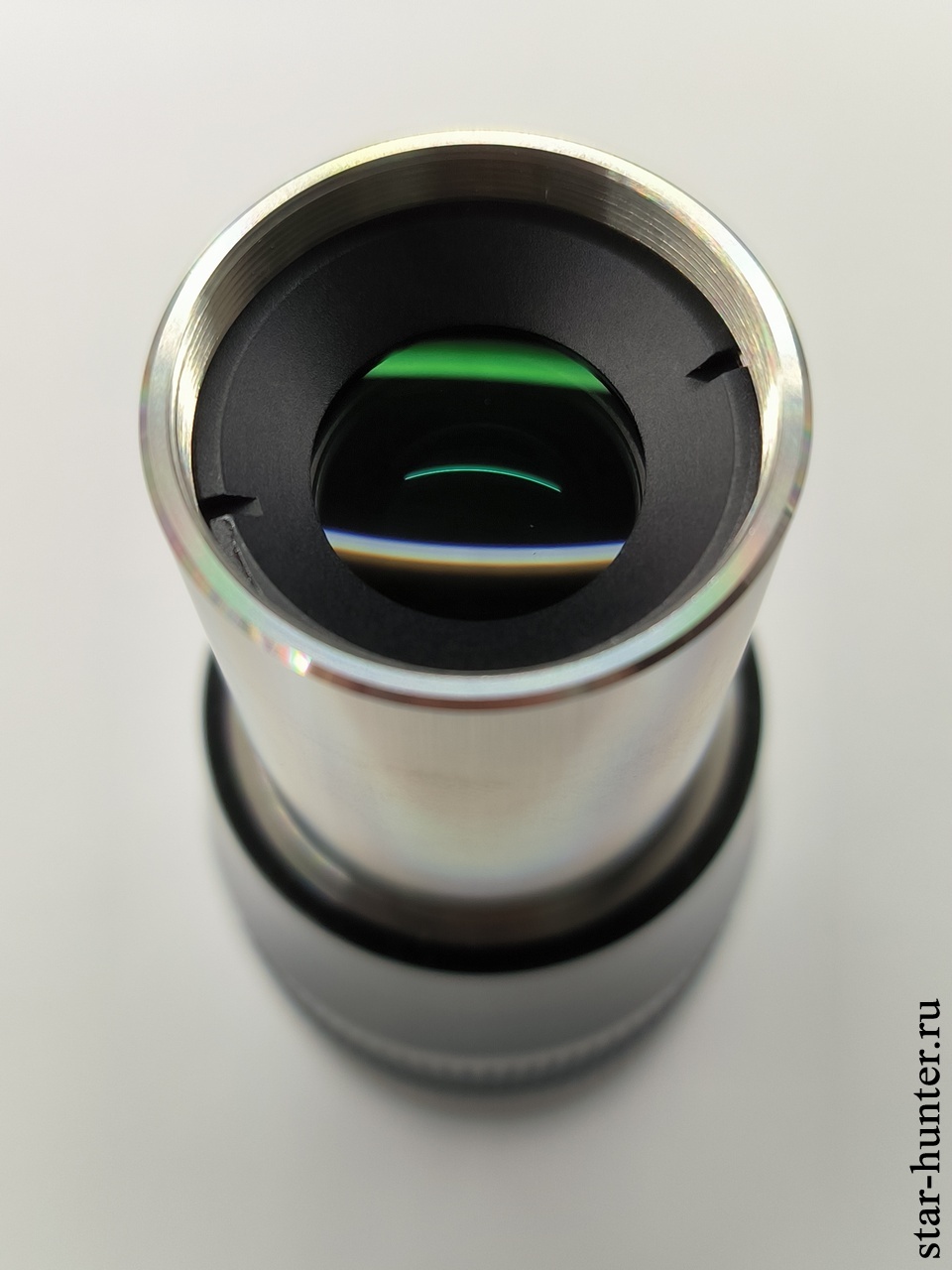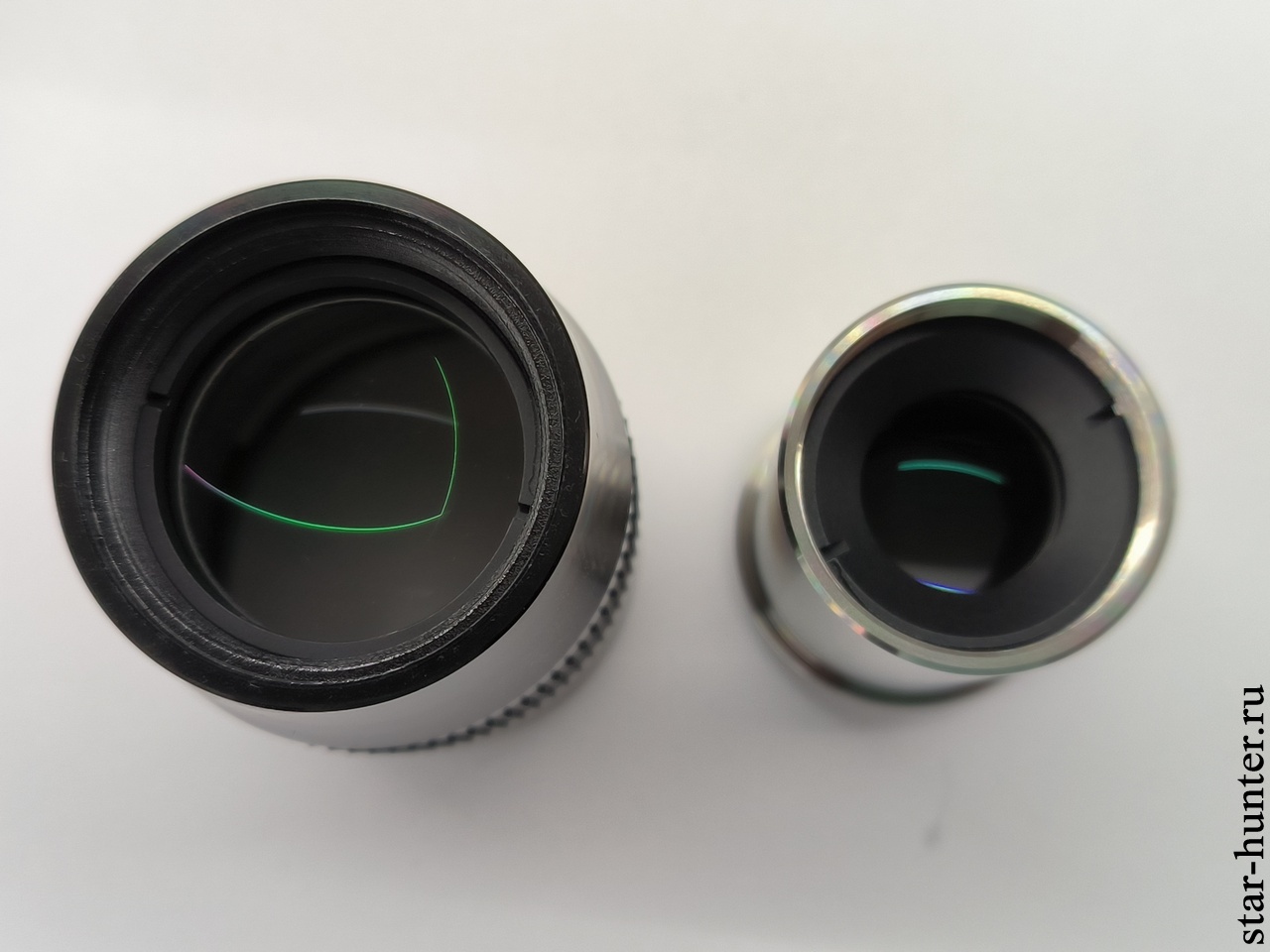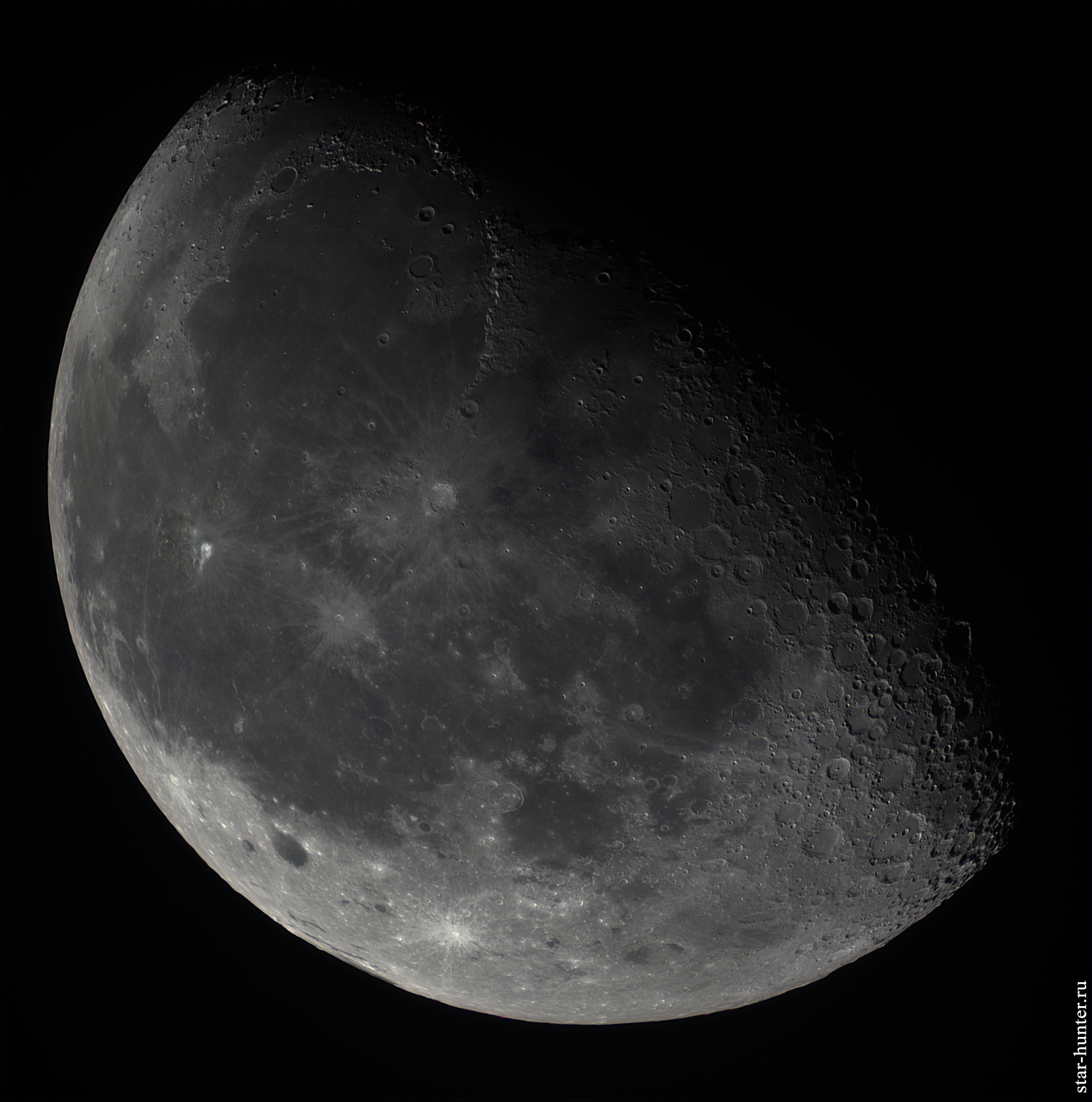I received for test Barlow lens Svbony SV216. The Barlow lens is an optical accessory that allows you to increase the focal length of the telescope several times. It can be used both for visual observations and for astrophotography. The manufacturer claims consistent 2x magnification, fully multi-coated 4-element construction, blackened lens ends, a flat field of view, and a 1.25″ fit with M28.5 x 0.6 filter threads.

However, constant magnification implies another important property – telecentricity, that is, this Barlow lens does not change the slope of the rays coming from the lens. The telecentric Barlow lens cannot be “overclocked” by an additional sleeve, does not increase eyepiece eye relief, introduces less distortion and works better with wide-angle eyepieces.
Specs
| Brand | SVBONY |
| Model | SV216 |
| Barrel Size | 1.25 inch |
| Magnification Factor | 2x |
| Number of Lens Elements | 4- Elements |
| Lens Coatings | Fully multicoated |
| Outside Length of Upper Body | 2.34inch / 59.5mm |
| Insertion Depth | 1.55inch /39.5mm |
| Max Diameter Excluding Thumbscrew | 1.73inch / 44mm |
| Net Weight | 7.72oz / 219g |
| Filter Threads | M28.5×0.6 |
| Barrel Type | Straight Barrel |
| Barrel Material | Stainless Steel |
| Number of Thumbscrew | 3PCS |
| Thumbscrew Thread Specification | M3x10 |
| Compression Band/Ring in Eyepiece Holder | Yes |
General view, equipment
The Barlow lens comes in a plastic case. Inside the bag there is a Barlow lens, three screws and protective covers. The body is massive metal. The skirt is cylindrical, without grooves and cones. Outside on the case there is a ribbed rubber ring. There is no T-thread on the output. The screws, when tightened, rest against a metal ring that holds the eyepiece or astronomical camera. The build quality is excellent.







My measurement results
Weight in flight case: 248 grams
Weight with covers and screws: 217 grams
Length without caps: 98.6 mm
Case length (black part): 59.34 mm
Skirt diameter: 31.93mm
Skirt length: 39.61mm
Thread Diameter: 27.90mm
Front lens diameter: 17 mm, recessed by 7.62 mm recessed, dull green coating + colorless glare.
The light diameter of the second component is 28 mm, concave inside, convex outside, dim green coating.
Outlet light diameter: 31.55 mm
Case diameter: 44mm (without screws).
The optics are clean and undamaged. Light protection is good, but not perfect, there are glare surfaces inside.


TESTING
For visual testing of the Svbony SV216 2x Barlow lens, I used a 150 mm Newton telescope with a parabolic mirror (f\5) on an azimuth mount, as well as two wide-angle eyepieces – Explore Scientific 24 mm 68 ° 1.25 “and Explore Scientific 11 mm 82 ° 1.25”. Also, for comparison, I found a 2x non-telecentric lens from Sky-Watcher with a T-adapter. The ES 24mm eyepiece is known for fully exploiting the capabilities of the 1.25″ format while still being wide angle. But the ES 11mm performs very poorly on the Moon with simple Barlow lenses due to strong bean vignetting and increased eye relief.
Visual observations of the Moon
Weather conditions: partly cloudy, hazy.
1) Sky-Watcher 2x + ES 24mm. The eyepiece eye relief noticeably increased, vignetting (darkening at the edges of the field of view) appeared. Approximately half of the field of view with good quality, then the image becomes blurry.
2) Svbony SV216 2x + ES 24mm. The eyepiece eye relief has not changed, there is no vignetting, the entire field of view is visible. The image quality across the field is excellent.
3) Sky-Watcher 2x + ES 11mm. Increased eye relief. If you bring the eye closer, something dark in the center of the field of view interferes with observation. At a distance of the eye from the eyepiece, observations are possible, but only about half of the field of view is visible.
4) Svbony SV216 2x + ES 11mm. The eye relief has not changed, the dark spot in the center has disappeared, the entire field of view is visible. The quality of the image across the field is excellent. A clear victory for Svbony.
Lunar test with 150mm f/5 SLR telescope and Canon 550Da SLR camera



Measured magnification from the image of the Moon:
Sky-Watcher: 2.9x (the increased magnification is due to the fact that the Canon 550Da camera has a working length (distance from the bayonet to the matrix) of 44 mm, plus a T-ring (11 mm), resulting in a kind of accelerating sleeve. Most likely , the calculated magnification is achieved during visual observations through the eyepiece, or when shooting with astrocameras in the 1.25″ form factor (for example Svbony SV905C).
Svbony SV216: 1.97x. Due to the more complex optical design, the magnification of the Barlow lens is constant even with an increase in the working distance. An additional T-adapter was used to connect to the T-ring.
Lunar test with apochromat quadruplet (D=70 mm, f=350 mm), astronomical camera ZWO 183MC
Without Barlow lens

With Barlow lens Svbony SV216 2x

The measured magnification was 1.98x.
SUMMARY
Excellent Barlow. Works great with eyepieces, including wide-angle ones. A constant multiplicity can be useful for cases where overclocking is not desired. Glare was not detected during visual observations and astronomical surveys of the Moon. Definitely recommend to buy.
Реклама: ООО “АЛИБАБА.КOМ (РУ)” ИНН 7703380158
Спасибо за обзор, классно что svbony подтягивается по качеству (хотя очевидно, что и цена при этом растёт, но без этого никак 🙂 ).
Возможно будет опубликована подборка из минимального количества оборудования для визуальных наблюдений начинающим?
Здравствуйте, Константин! Да, линза Барлоу порадовала. Скоро ещё допишу обзор на линзу Барлоу SVBONY SV213 1.25″ 3x
У меня есть статья для начинающих https://star-hunter.ru/first_steps/
Однако предложенная Вами тематика достойна отдельной статьи 🙂 Напишу в ближайшее время.